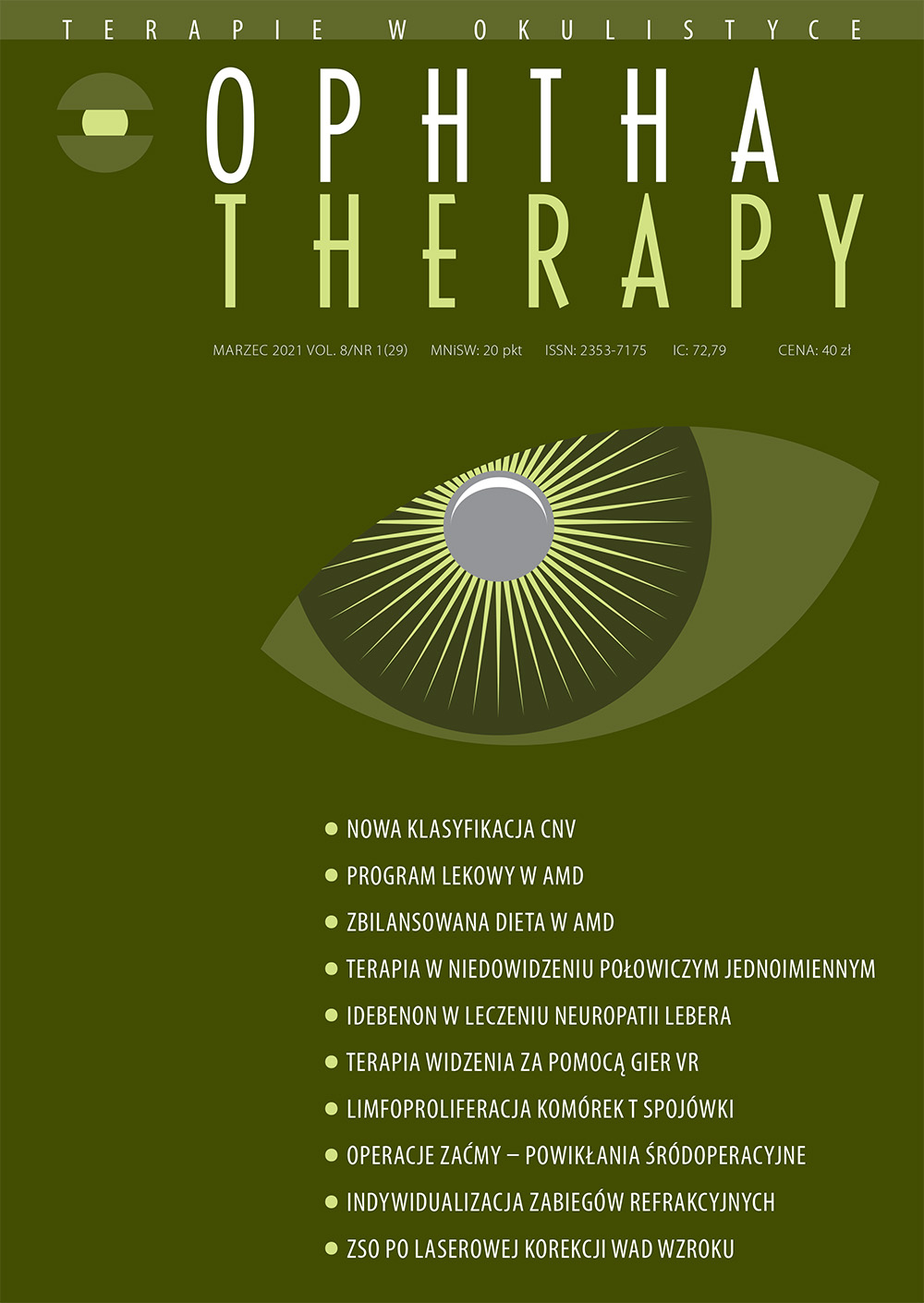Stereopsis deficiency treatment using virtual reality games in exotropic candidate for firefighter Case report
Main Article Content
Abstract
Background: Impaired stereopsis very often limits career options for patients with binocular vision disorders. Eyesight requirements for some occupations like police officers and firefighters usually include perfect visual acuity. In Poland, candidates for these professions must also demonstrate perfect stereopsis. The presented case study aims to demonstrate that vision therapy (VT1) mixed with new technologies may be an effective treatment for young adults who do not meet the chosen occupation's visual requirements.
Case report: A case of a young man diagnosed with intermittent exotropia and poor stereopsis is discussed. Poor stereopsis did not allow him to pass the ophthalmological qualification tests to the fire academy. Vision therapy was implemented to improve stereopsis. The case report presents the patient’s treatment implemented within 4 years. The patient started with prismatic correction, then received the office-based VT with home reinforcement. The improvement in fusional vergence and the control of deviation was observed. Nevertheless, the patient was still stereo-deficient. 3 years later, Binocular Vision Therapy in Virtual Reality (BVTVR2) was recommended. The patient received home-based therapy for 16 weeks (60 minutes per day), which has resulted in significant improvement of stereopsis. As a result, he finally met the visual requirements to become a firefighter.
Conclusion: BVTVR appears to be a promising rehabilitation method for patients with poor stereopsis. Three-dimensional anti-suppression therapy and dynamic, real-life stereopsis training seem to be a more effective treatment of poor stereopsis compared to standard VT techniques.
Downloads
Article Details

This work is licensed under a Creative Commons Attribution-NonCommercial-NoDerivatives 4.0 International License.
Copyright: © Medical Education sp. z o.o. License allowing third parties to copy and redistribute the material in any medium or format and to remix, transform, and build upon the material, provided the original work is properly cited and states its license.
Address reprint requests to: Medical Education, Marcin Kuźma (marcin.kuzma@mededu.pl)
References
2. Stathacopoulos RA, Rosenbaum AL, Zanoni D et al. Distance stereoacuity. Assessing control in intermittent exotropia. Ophthalmology. 1993; 100(4): 495-500. https://doi.org/10.1016/S0161-6420(93)31616-7.
3. O’Connor, Tidbury LP. Stereopsis: are we assessing it in enough depth? Clin Exp Optom. 2018; 101(4): 485-94. https://doi.org/10.1111/cxo.12655.
4. Coffey B, Wick B, Cotter S et al. Treatment options in intermittent exotropia: a critical appraisal. Optom Vis Sci. 1992; 69(5): 386-404. https://doi.org/10.1097/00006324-199205000-00008.
5. Koklanis K, Georgievski Z. Recurrence of intermittent exotropia: factors associated with surgical outcomes. Strabismus. 2009; 17(1): 37-40. https://doi.org/10.1080/09273970802678750.
6. Scheimann M, Wick B. Clinical Management of Binocular Vision: Heterophoric, Accommodative, and Eye Movement Disorders. 5th ed. Lippincott Williams & Wilkins 2019.
7. Peddle A, Han E, Steiner A. Vision therapy for basic exotropia in adults: 2 case studies. Optometry. 2011; 82: 467-74. https://doi.org/10.1016/j.optm.2010.12.013.
8. Ma MM, Kang Y, Chen C et al. Vision therapy for intermittent exotropia: A case series. J Optom. 2020; 12: S1888-4296(20)30081-9. https://doi.org/10.1016/j.optom.2020.05.006.
9. Pejic Z, Wong A, Husain R et al. Fusion Exercises for Treatment of Intermittent Exotropia and Phoria. Am Orthopt J. 2006; 56: 138-46. https://doi.org/10.3368/aoj.56.1.138.
10. Li X, Yang C, Zhang G et al. Intermittent Exotropia Treatment with Dichoptic Visual Training Using a Unique Virtual Reality Platform. Cyberpsychol Behav Soc Netw. 2019; 22(1): 22-30. https://doi.org/10.1089/cyber.2018.0259.
11. Vedamurthy I, Knill DC, Huang SJ et al. Recovering stereo vision by squashing virtual bugs in a virtual reality environment. Philos Trans R Soc Lond B Biol Sci. 2016; 371(1697): 20150264. https://doi.org/10.1098/rstb.2015.0264.
12. Žiak P, Holm A, Halička J et al. Amblyopia treatment of adults with dichoptic training using the virtual reality oculus rift head mounted display: preliminary results. BMC Ophthalmol. 2017; 17(1): 105. https://doi.org/10.1186/s12886-017-0501-8.
13. Serrano-Pedraza I, Manjunath V, Osunkunle O et al. Visual suppression in intermittent exotropia during binocular alignment. Invest Ophthalmol Vis Sci. 2011; 52(5): 2352-64. https://doi.org/10.1167/iovs.10-6144.

